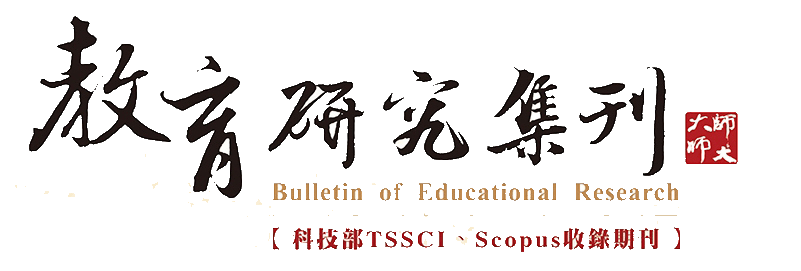| 篇名 |
五四時期馬來亞華人社會的「走向底層」運動與通俗學校之興起
更多文章
|
|---|---|
| 並列篇名 | The “Going to the Underclass” Movement in Malayan Chinese Society and the Rise of Folk School During the May Fourth Period |
| 作者 | 許德發 |
| 中文摘要 | 研究目的 有關五四運動在馬來亞的作用與接受,過去的研究更多將之視為一種歷史必然的邏輯關係,相關與直接的史料梳理與辯證可謂不多,在有關教育與思潮的研究上亦如此。本研究嘗試以「通俗學校」為中心,窺視在一個以文盲為主、缺乏文化建制與知識階層的馬華社會裡,華人早期的知識傳布如何「走向底層」,試圖回答「啟蒙」在早期華人社會中「如何可能」這一問題。 主要理論或概念架構 不適用。 研究設計/方法/對象 本研究為質性研究,以馬來亞早期主要的華文報刊《新國民日報》與《叻報》的新聞報導與評論作為社會文本,同時輔以部分學校特刊佐證,並以「五四啟蒙運動時期」,即1917年至1924年為研究年限,探析「通俗學校」概念的流傳及其發展歸趨。 研究發現或結論 從初步的探析中,可見馬來亞華人社團、鄉團、書報社,尤其是新興組織,如青年組織,在促進「走向底層」的啟蒙教育上發揮了關鍵作用。在馬來亞華人社會的「走向底層」運動中,它顯然不是一個菁英或知識分子式的啟蒙運動,而是一個缺乏明確「領導中心」的下層啟蒙運動,它並不像中國「平民教育」思潮那樣,有一個以北京大學生作為「領導中心」的主張與理念發散者。此外,亦可以論斷「通俗學校」/「平民教育」概念在1920年代的馬來亞華人社會中,其傳播與實踐是相混的、互存的,即二者並行於社會之中,但「平民教育」思潮帶動了「通俗學校」。對於一般勞工階級來說,他們的知識水準較低,絕大多數人甚至不識字,因此,這種通俗學校特別重要。這一方面造成馬來亞的夜校更傾向於識字、掃除文盲的層次,而並未企達五四之後所追求的個性、個人覺醒與平等價值的高度。易言之,馬來亞的底層啟蒙運動在性質上,屬於「通俗教育」多於「平民教育」。另一方面,這也導致他們日常的閱讀習慣恐怕不僅僅是書面文字,而是需要以聲音來閱讀,如聽報、看戲劇等這類的另類閱讀形式。 理論或實務創見/貢獻/建議 本研究透過早期報刊的報導窺視「通俗學校」思潮與辦學現象及趨勢,揭示了五四新思潮在馬來亞華人社會中之傳播方式及其具體影響,以探析其源流,彌補了過去有關五四啟蒙思潮研究的不足。本研究也指出,馬來亞的五四啟蒙傳播是外發的,它雖來自中國,以因應其啟蒙救亡之需要,但在馬來亞勞工階層為主的特殊社會背景下,其體現似乎有所不同,夜校與補習夜學更為普遍,它除了嘗試兼顧「通俗教育」與「平民教育」所追求之價值外,更要滿足南洋華僑的「社會秩序之需」,本研究提供有關五四海外傳播研究的新視野。
|
| 英文摘要 | Purpose Previous research on the role and impact of the “May Fourth Movement” in Malaya has often portrayed the movement as historically inevitable, but it often lacks direct historical factual support and dialectical associations, particularly in studies related to education and intellectual trends. This article focuses on “folk school” to explore how early Chinese Intellectual dissemination “going to the underclass” within Malayan Chinese society, which was an immigrant society primarily composed of illiterate people and lacking cultural institutions and intellectual classes. It seeks to answer the question of how “enlightenment” was “possible” in early Malayan Chinese society. Main Theories or Conceptual Frameworks Not applicable. Research Design/Methods/Participants This article is a qualitative study that uses early major Chinese newspapers in Malaya, such as The Sin Kuo Min and Lat Pau, as social texts, supplemented by school special publications as supporting evidence. The study focuses on the period of “May Fourth Enlightenment Movement”, from 1917 to 1924, to analyze the dissemination and development trajectory of the concept of “folk school.” Research Findings or Conclusions Preliminary analysis reveals that Chinese associations, clan groups, and newspaper reading societies, particularly emerging organizations such as youth organizations, played a key role in promoting grassroots enlightenment education. In Malayan Chinese “Going to the Underclass” movement, it was clearly not an elite or intellectual driven enlightenment movement but a lower-class enlightenment movement lacking a clear “leadership center,” unlike the “popular education” movement in China, which was driven by Beijing university students who served as the proponents and disseminators of ideas. Additionally, it can be argued that in the 1920s, the concepts of “folk school” and “popular education” were intertwined and coexisted in the Malayan Chinese society, with “popular education” thought driving “folk school.” For the general labour class, who had a relatively low level of knowledge and the majority of whom were illiterate, this folk school approach was particularly important. This led to night schools in Malaya tending more towards literacy and eradicating illiteracy, rather than on achieving the post-May Fourth goals of individual personality development, personal awakening, and equality values. In other words, the grassroots enlightenment movement in Malaya was more of a “folk education” rather than a “popular education” in nature. On the other hand, this also meant that their daily reading habits likely extended beyond just written texts; they needed to “read” through sound, such as listening to news reports or watching dramas, engaging in alternative forms of reading. Theoretical or Practical Insights/Contributions/Recommendations This article attempts to explore the “folk school” movement and the phenomena and trends of school-running through early newspaper reports, revealing the dissemination methods and specific impacts of the new May Fourth ideas in Malayan Chinese society, and tracing their origins. It aims to fill the gap in previous research on the May Fourth Enlightenment thought. This article also points out that the dissemination of the May Fourth enlightenment in Malaya was externally driven, originating from China to meet its need for enlightenment and national salvation. However, in the unique social context of Malaya, which was primarily composed of the labour class, its manifestation of the movement differed somewhat. Night school and Supplementary School became more prevalent, not only striving to balance the values pursued by both “folk education” and “popular education,” but also taking the responsibility of maintaining “social order” among the overseas Chinese in the Nanyang region. This provides a new perspective on the study of the overseas dissemination of the May Fourth Movement. |
| 起訖頁 | 079-117 |
| 關鍵詞 | 五四、平民學校、走向底層、夜校、啟蒙、通俗學校、May Fourth、folk schools、going to the underclass、night school、enlightenment、popular education |
| 刊名 | 教育研究集刊 |
| 期數 | 202409 (70:3期) |
| 出版單位 | 國立臺灣師範大學教育學系 |
| DOI | 10.6910/BER.202409_70(3).0003 複製DOI |
| 該期刊-上一篇 | 成為農民:日治時期教育所實科課程發展之探析 |
| 該期刊-下一篇 | 《周易》憂患意識及修德九卦之德育意涵 |








